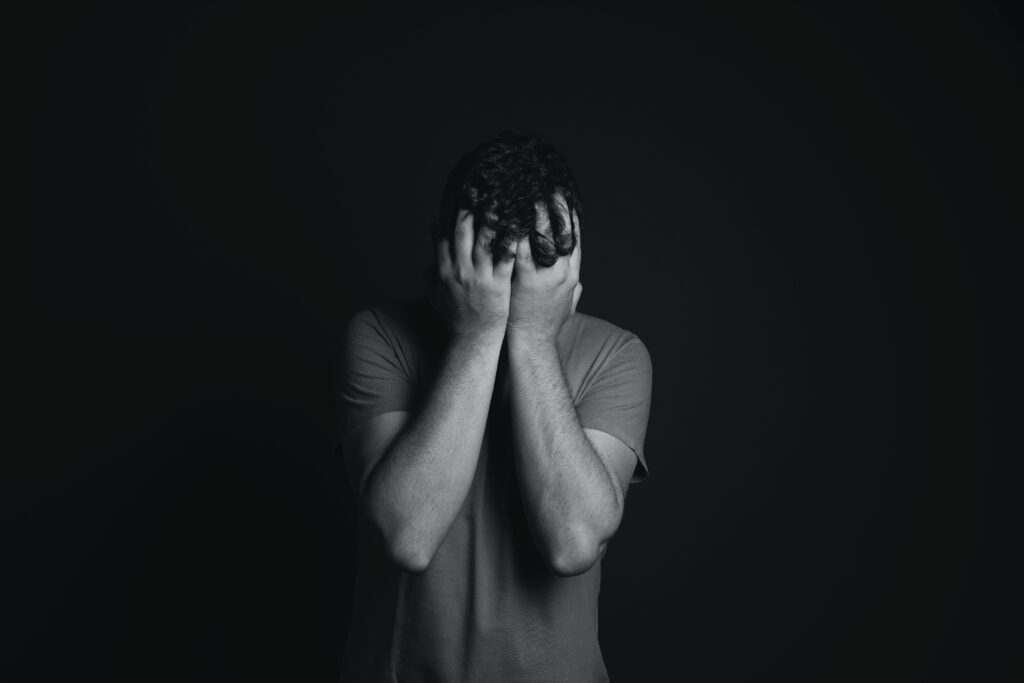6 Things Anxious People Know All Too Well

Are you worried about someone in your life who has or may have anxiety? Or are you perhaps curious about people with anxiety? You may be curious, for instance, about the struggles they face and what concerns often run through their mind.
On the other hand, you may be struggling with anxiety yourself, and want to know if others feel the same. If you are indeed grappling with it, know that you are not alone, and that your feelings are valid.
This article details common challenges and problems that people with anxiety face, have become familiar with, and may know all too well.
What is Anxiety?
Anxiety is a normal and even necessary part of life. It alerts us to dangers and helps us prepare for a wide variety of situations (American Psychiatric Association, 2021).
According to the Diagnostic and Statistical Manual of Mental Disorders (DSM), anxiety becomes pathological (a disorder) for some people when it starts to greatly impair daily functioning, and different aspects of their lives (DSM-5, 2013; Felman, 2020).
This article is not intended to diagnose or self-treat. Please read the concluding remarks below for a full disclaimer, and reach out to a qualified healthcare provider or mental health professional if you are struggling.
With that being said, here are 6 things anxious people know all too well.
1. Sleep difficulties
One thing people with anxiety tend to know quite well is the struggle of sleep difficulties. Often, they struggle with problems such as falling or staying asleep. They may be too consumed with their worries to fall asleep. Otherwise, these worries might disrupt their sleep and wake them in the middle of the night.
It is not uncommon for people with anxiety to toss and turn at night, and deal with the mental and physical repercussions this entails during the day (Bence, 2021; Felman, 2020; Signs and symptoms of anxiety, n.d., Mayo Clinic, 2018).
2. Restlessness or tension
People with anxiety can also become familiar with feeling “on edge.” They may feel nervous because of their worries and anxious thoughts, leaving them with a constant feeling of restlessness. This feeling of being antsy and tense can become a frequent occurrence for them as the anxiety worsens.
This, however, does not mean that they become comfortable with the feeling. On the contrary, it may invade and negatively affect their lives as it becomes more and more of a concern (Felman, 2020; Signs and symptoms of anxiety, n.d., Mayo Clinic, 2018).
3. Physical aches or ailments
Everyone feels anxious sometimes, and as previously mentioned, anxiety even serves its purpose in our lives. However, people who struggle with anxiety pathologically will also know the challenges of dealing with physical symptoms all too well.
Physical symptoms that accompany anxiety can include: irregular heart rate, hyperventilation (rapid breathing), sweating, trembling, stomach problems, nausea, muscle tension, or fatigue (Signs and symptoms of anxiety, n.d., Anxiety: Is it an illness?, Mayo Clinic, 2018; Bence, 2021).
4. Concentration difficulties
As people who struggle with anxiety become overwhelmed with their worries and fears, they also begin to find it difficult to concentrate.
As these anxieties occupy most of their thoughts, and as they dwell on these excessively, it becomes harder for them to focus on other matters. Thus, concentration difficulties are also a struggle that people with anxiety become familiar with (Felman, 2020; Signs and symptoms of anxiety, n.d., Mayo Clinic, 2018).

5. Impaired daily functioning
While feelings of anxiety every now and then are normal, people with pathological anxiety will experience this to persistent or extreme levels, to the point of interfering with day-to-day functioning.
Anxiety as a disorder can drastically affect performance at school or work, causing problems for the individual. It can harm friendships and relationships, and even make daily mundane tasks like household chores or cleaning up difficult. This struggle of anxiety disrupting daily life, and having to plow through the day because of it, is something anxious people know all too well (Felman, 2020; Psychology Today, n.d.).
6. Struggles to control worries
Perhaps one of the biggest challenges of anxiety— as well as one of its biggest ironies—
is how difficult it is to control anxious thoughts. It is one thing to have fears sometimes, and another to feel completely unable to control them.
Try as they might, the anxiety feels bigger than them. Physical symptoms and worries feed each other, connect and overlap, making the overall experience of anxiety feel too overwhelming and too big to control. After all—if they knew how to simply stop worrying, like an off switch, then they wouldn’t be struggling with anxiety in the first place (Felman, 2020; Signs and symptoms of anxiety, n.d.; Mayo Clinic, 2018, Anxiety: Is it an illness?, Bence, 2021).
Concluding Remarks
Anxiety Disorders are complex and varied. There are different types of anxiety disorders, with some common and similar, but not identical symptoms. Furthermore, anxiety can be experienced in varying degrees. A person’s experience of anxiety will differ based on their individual circumstances, as well as their specific type of anxiety disorder and triggers.
As a certain level of anxiety is normal, it is important to note that anxiety disorders are those that cause clinically significant distress or impairment in different aspects of life (Bence, 2021; DSM-5, 2013; Psychology Today, n.d.).
For these reasons, it is important to reach out to a professional for a complete diagnosis. If you or anyone you know could be struggling with an anxiety disorder, please do not hesitate to reach out to a qualified mental health care provider.
References
Anxiety: Is it an illness? Psychology Today. (n.d.). Retrieved from https://www.psychologytoday.com/intl/basics/anxiety/anxiety-is-it-an-illness
Bence, S. (2021, February 15). Anxiety: Signs, symptoms, and complications. Verywell Health. Retrieved January 11, 2022, from https://www.verywellhealth.com/anxiety-symptoms-5086955
Diagnostic and Statistical Manual of Mental Disorders: DSM-5. Washington, DC: American Psychiatric Publishing; 2013.
Felman, A. (2020, January 11). Anxiety: Symptoms, types, causes, prevention, and treatment. Medical News Today. Retrieved from https://www.medicalnewstoday.com/articles/323454#symptoms
Mayo Foundation for Medical Education and Research. (2018, May 4). Anxiety disorders. Mayo Clinic. Retrieved from https://www.mayoclinic.org/diseases-conditions/anxiety/symptoms-causes/syc-20350961
Signs and symptoms of anxiety. Psychology Today. (n.d.). Retrieved from https://www.psychologytoday.com/us/basics/anxiety/signs-anxiety
What Are Anxiety Disorders? American Psychiatric Association. (2021, June). Retrieved from https://www.psychiatry.org/patients-families/anxiety-disorders/what-are-anxiety-disorders.



Responses